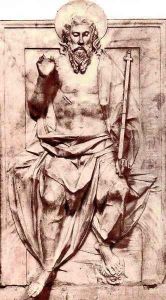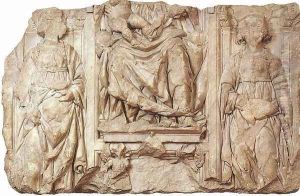Giovanni Dalmata Paintings
Giovanni Dalmata, also known as Giovanni di Traù or Ivan Duknović, was a distinguished sculptor of the Renaissance period, originating from the Dalmatian coast, a region that is part of modern-day Croatia. Born around 1440, his work significantly contributed to the artistic landscapes of Italy and his native Dalmatia, illustrating the blend and exchange of cultural and artistic traditions between the Italian Peninsula and the Eastern Adriatic coast during the Renaissance.
Giovanni Dalmata's career is noteworthy for his adept skill in marble and his ability to infuse his sculptures with a sense of vitality and expression that was emblematic of the Renaissance's rediscovery and reinterpretation of classical antiquity. His style is characterized by a delicate realism combined with an innate understanding of human anatomy and emotion, which he gracefully integrated into religious and secular themes.
Despite the challenges of working in a period dominated by such towering figures as Michelangelo and Donatello, Dalmata managed to carve a niche for himself, particularly in Rome where he executed significant commissions. Among his renowned works are contributions to the Basilica of San Pietro in Vincoli in Rome and the Sistine Chapel, where his skills in crafting figures and decorative elements were put to prominent use. His works in Dalmatia, such as those in the Cathedral of St. James in Šibenik, highlight his versatility and the seamless integration of local and Italian Renaissance influences.
Giovanni Dalmata's legacy extends beyond his sculptures; he played a part in the cultural exchange between Italy and the Eastern Adriatic, contributing to the diffusion of Renaissance ideals outside Italy. He passed away in 1514, leaving behind a body of work that continues to be studied for its artistic merit and historical significance.

